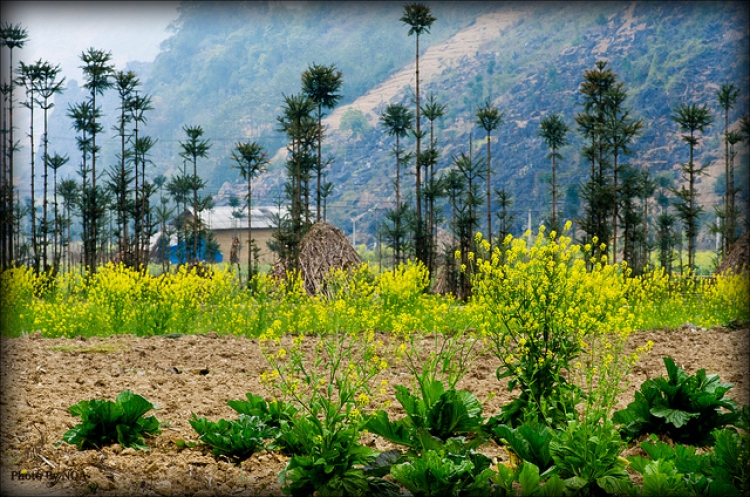Chuyen Cua Pao, which won a Golden Kite award in 2005 and was presented at the Cannes Film Festival in France in 2007, depicts the life of a Mong girl named Pao. Viewers found the scenery as powerful as the narrative.
"When I came to the village, I found it even more beautiful than in the film. I remembered seeing Pao walking around cabbage flowers or weaving beside the loom," said tourist Le Viet Ha. "I was glad to visit Pao's house, a typical house of Mong people which is really alluring. I was impressed by the scenes of her brother taking the goat flock home through the wooden gate and the ancient stone ledge."
Sung La is on national road 4C, which leads to the northernmost point of Viet Nam on the Chinese border. The road connects two of the most famous tourist spots in Ha Giang province: Dong Van town and the house of Vuong Chinh Duc, a king of the ethnic minority people in Ha Giang. The beautiful village is home to the Mong people, one of the most populous minority groups in the country.
Here, tourists can see endless fields of corn like in other ethnic minority villages. However, the huge rose fields make it different from other regions. When harvested, those roses are taken to big cities like Ha Noi. Visitors often call the village the "rose of the plateau".
The black and stone houses of local inhabitants in the valley perch on mountain slopes that are covered by fog all year. The sun struggles to shine through the whole valley, creating a dreamlike scene.
The colourful costumes of Mong women going to market with horses and melodious sounds of the pan-pipe also seduce tourists.
Since the success of the film, Sung La began to develop community-based tourism, with some families offering homestay services to tourists.
"We will try not to let tourism change the lifestyle of local inhabitants," said Nguyen Cong Van, the village's chairman.
Sand dune

Another paradise recently revealed to movie lovers is Nam Cuong sand dune in southern Ninh Thuan province, which was featured in the TV series Dau Chan Du Muc (Nomadic People Footprints).
Directed by Dinh Thai Thuy and recently broadcast on Viet Nam Television, the 40-episode series was the first to feature the beauty of this region, exploring the daily life of those hired to tend cows, sheep and goats.
The 700-ha sand dune is often compared to a gold silk carpet under the glistening sun. It is surrounded by mountains, sea, rice fields, villages and pastures where cows graze tranquilly.
On the way to the sand dunes, travellers can see cacti with red and yellow flowers that are tough enough to survive the sterile land.
A shrimp farming village nearby helps tourists learn about the daily life of the local villagers. Sometimes travellers can meet Cham girls in traditional costumes with water jars on their heads and herdsmen walking with their animals. One can also see the colours of the sand change as the sun sets.
"Ninh Thuan is the driest region of Viet Nam so we faced several difficulties filming in this region. We are very happy about the beautiful images that the film offers viewers," said producer Nguyen Quang Tuyen.






































































































